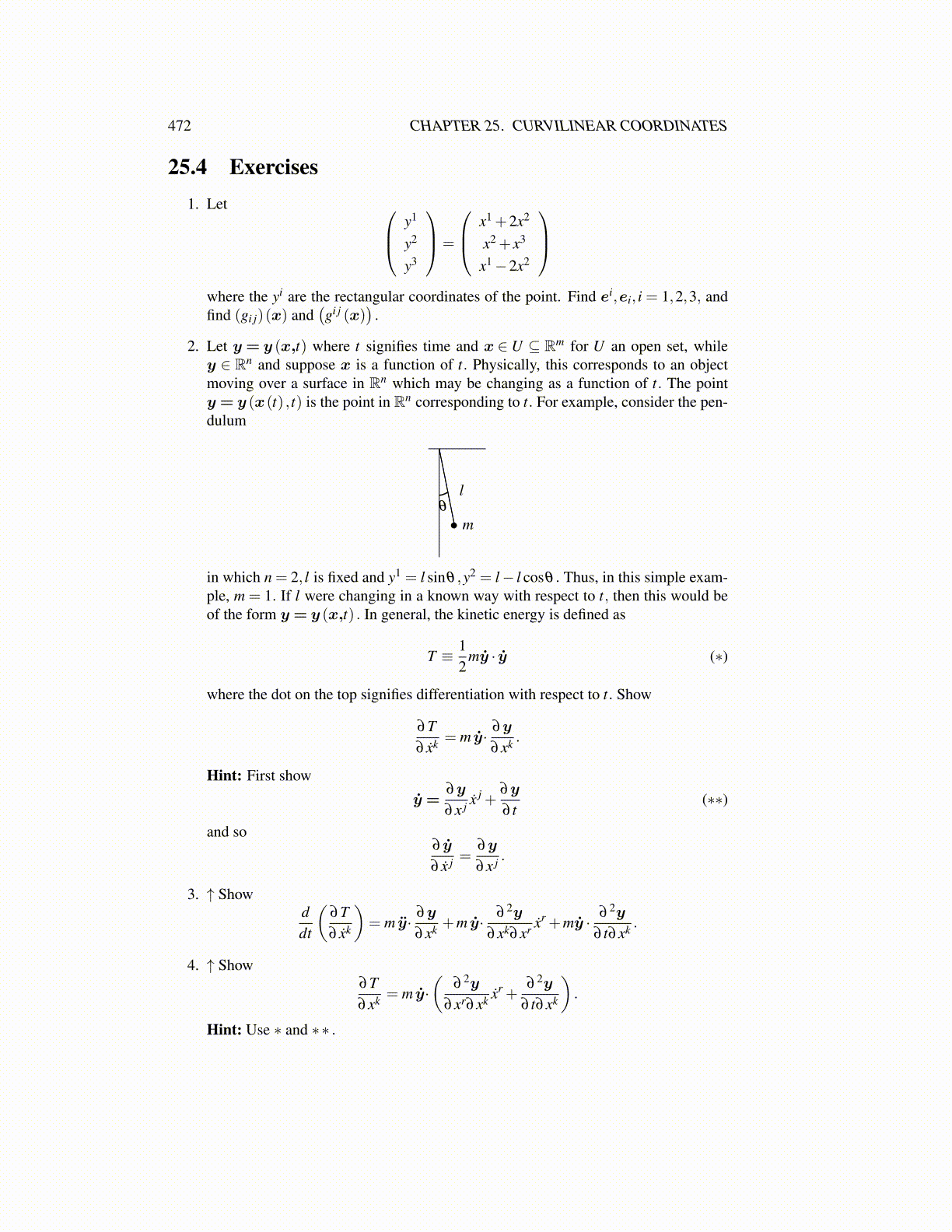
472 CHAPTER 25. CURVILINEAR COORDINATES
25.4 Exercises1. Let y1
y2
y3
=
x1 +2x2
x2 + x3
x1−2x2
where the yi are the rectangular coordinates of the point. Find ei,ei, i = 1,2,3, andfind (gi j)(x) and
(gi j (x)
).
2. Let y = y (x,t) where t signifies time and x ∈ U ⊆ Rm for U an open set, whiley ∈ Rn and suppose x is a function of t. Physically, this corresponds to an objectmoving over a surface in Rn which may be changing as a function of t. The pointy = y (x(t) , t) is the point in Rn corresponding to t. For example, consider the pen-dulum
• m
lθ
in which n = 2, l is fixed and y1 = l sinθ ,y2 = l− l cosθ . Thus, in this simple exam-ple, m = 1. If l were changing in a known way with respect to t, then this would beof the form y = y (x,t) . In general, the kinetic energy is defined as
T ≡ 12
mẏ · ẏ (∗)
where the dot on the top signifies differentiation with respect to t. Show
∂T∂ ẋk = m ẏ· ∂y
∂xk .
Hint: First show
ẏ =∂y
∂x j ẋ j +∂y
∂ t(∗∗)
and so∂ ẏ
∂ ẋ j =∂y
∂x j .
3. ↑ Showddt
(∂T∂ ẋk
)= m ÿ· ∂y
∂xk +m ẏ· ∂ 2y
∂xk∂xr ẋr +mẏ · ∂ 2y
∂ t∂xk .
4. ↑ Show∂T∂xk = m ẏ·
(∂ 2y
∂xr∂xk ẋr +∂ 2y
∂ t∂xk
).
Hint: Use ∗ and ∗∗ .